Abstract
The occurrence of pneumatisation in the skull of the adult domestic fowl was investigated in eight birds by gross and histological examination. It was found to occur regularly throughout the neurocranium and in the quadrate and variably in the mandible, but to be absent in the facial skeleton. Close agreement was found between gross and histological examination. The entire skeletons of fifty one adult birds all from the same hatch and kept under the same conditions were examined grossly for evidence of the occurrence and extent of pneumatisation. Previous findings for the skull were confirmed with the additional information that pneumatisation in the pterygoid was variable. Variation in the extent of skull pneumatisation was less than in the postcranial skeleton, where only cervical vertebrae 5-9 were found to be regularly pneumatised. The humerus and coracoid were variably pneumatised, often unilaterally. The os coxae and sternum had a very low incidence of pneumatisation. The three cockerels in the group appeared to be relatively well pneumatised. Some possible factors governing the occurrence and extent of pneumatisation in the skeleton are discussed.
Full text
PDF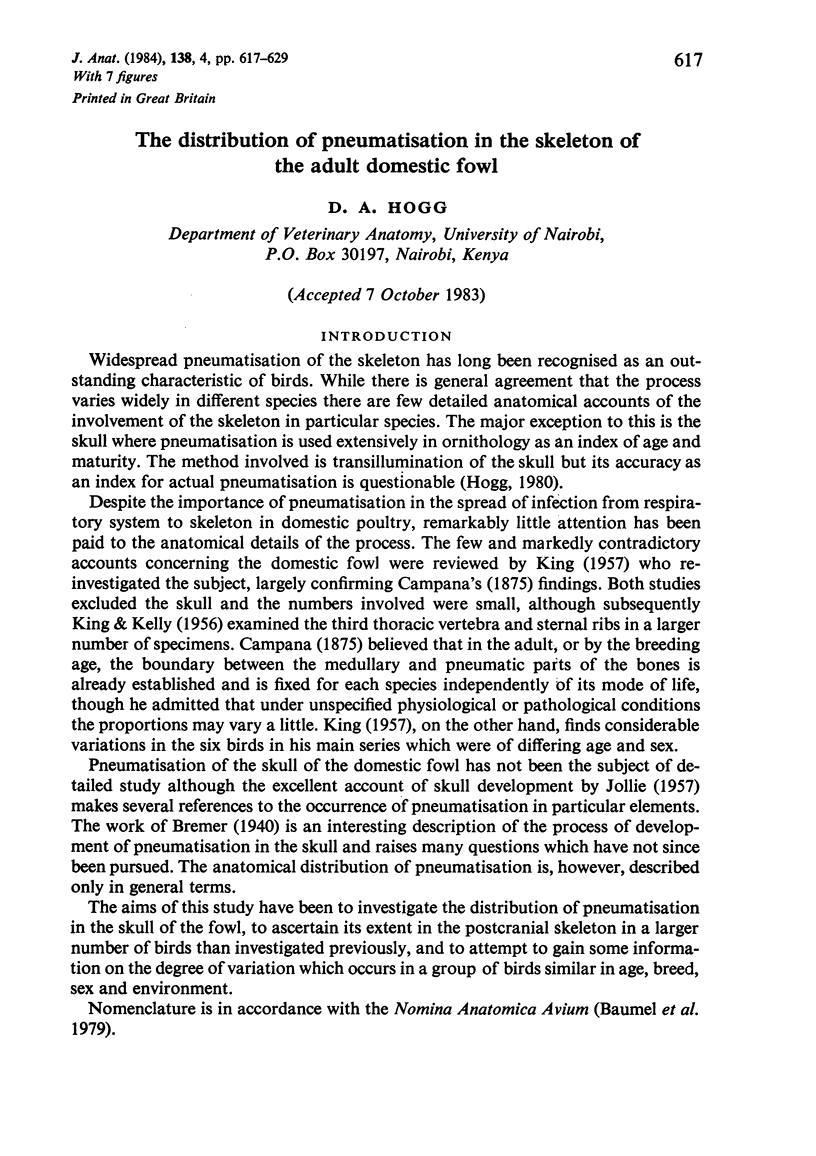
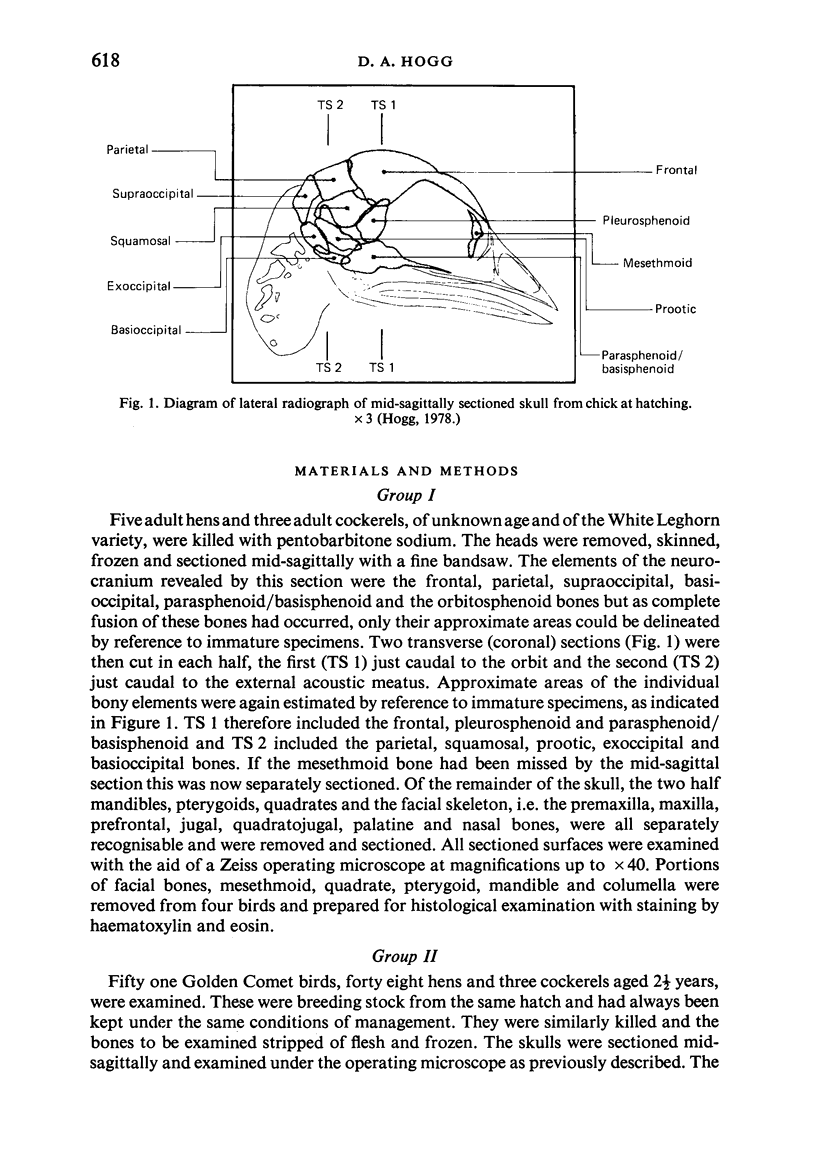
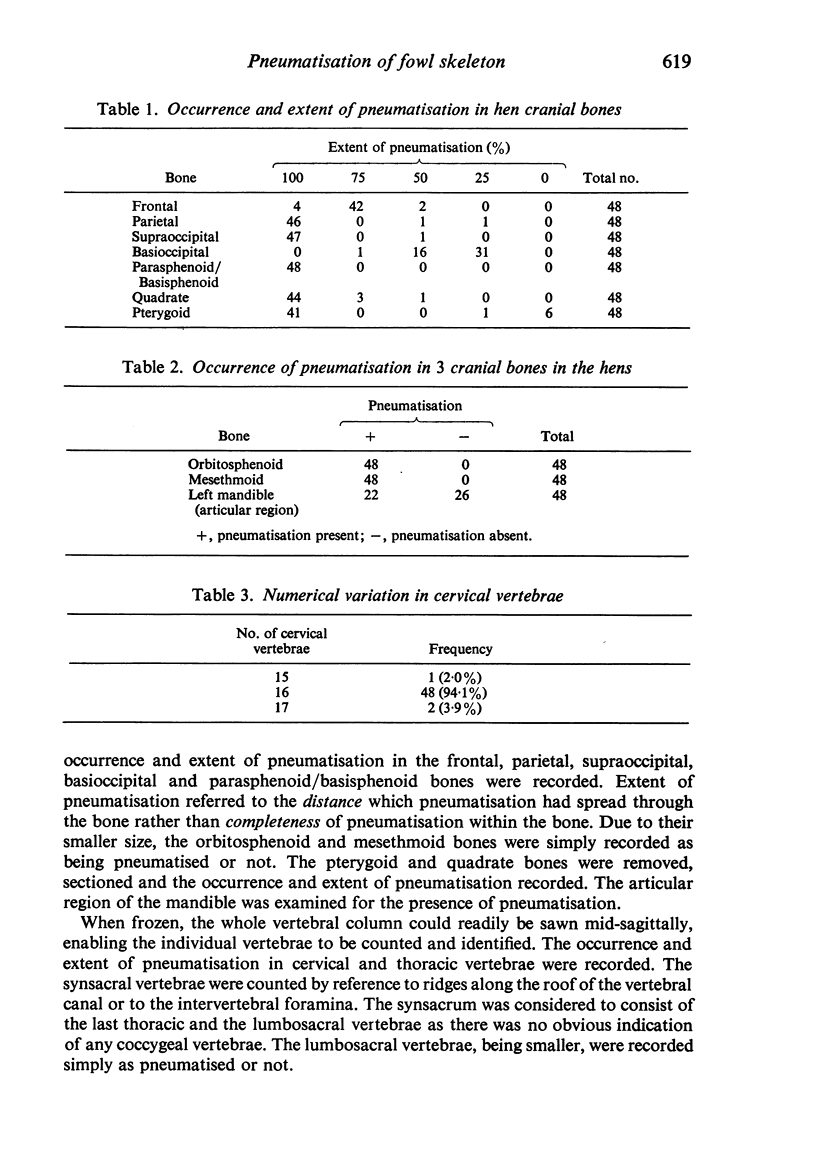

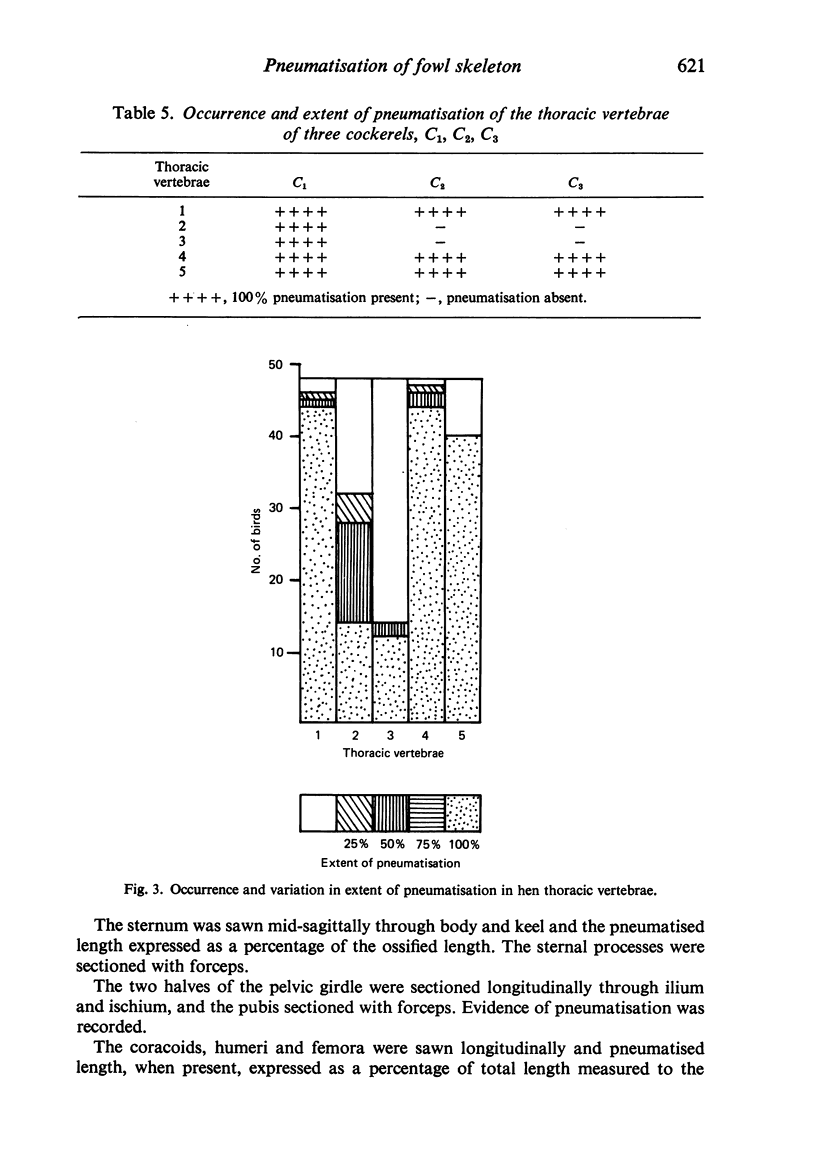
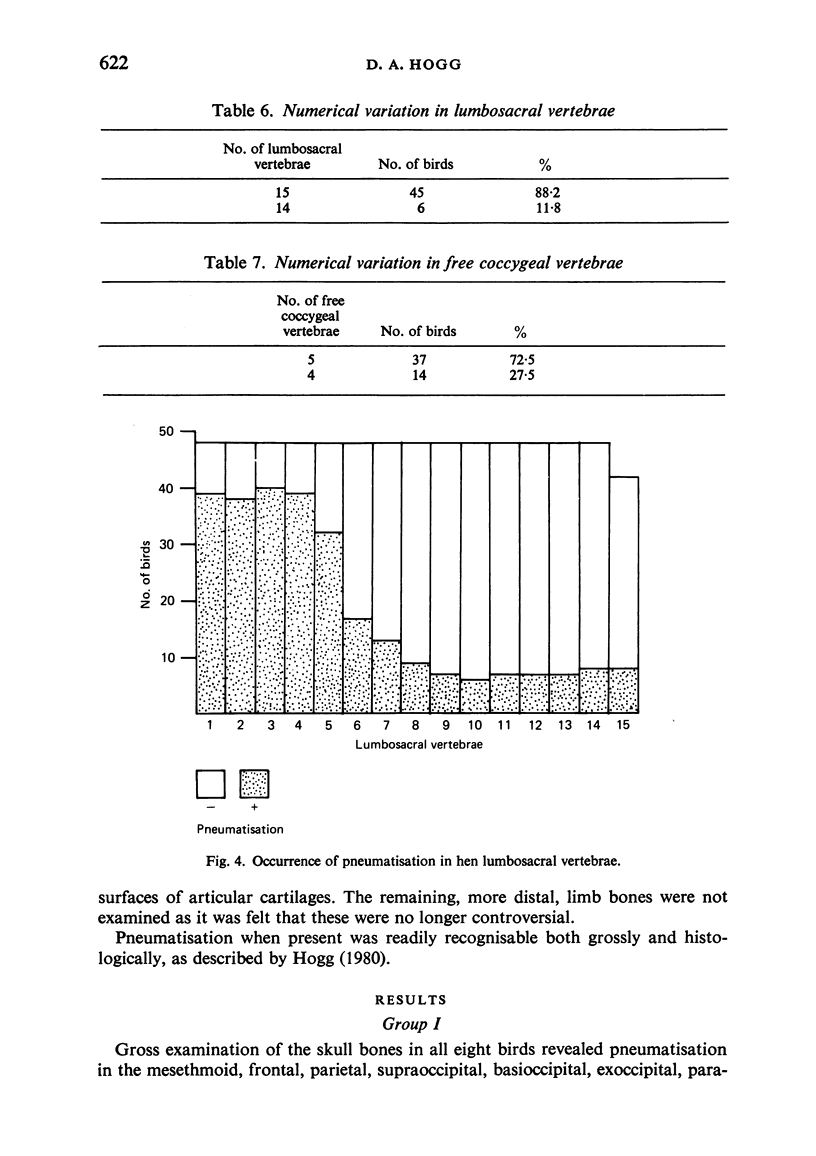

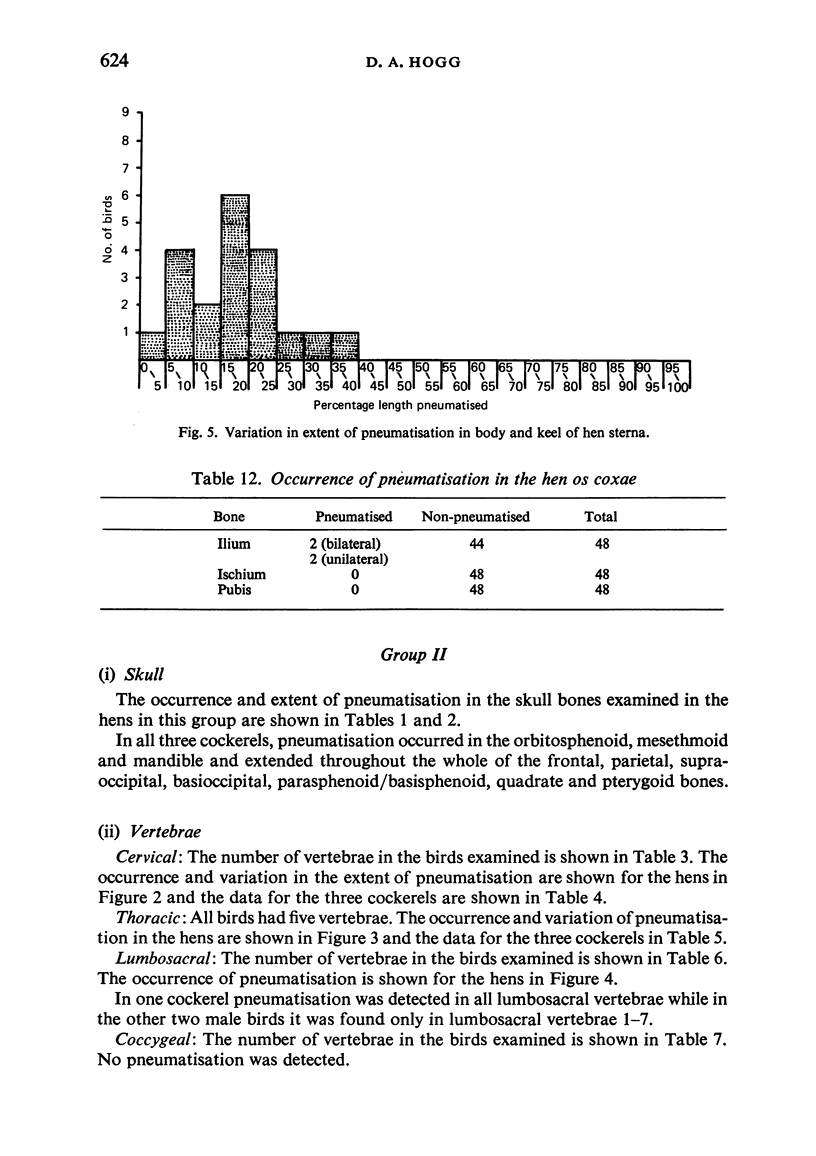
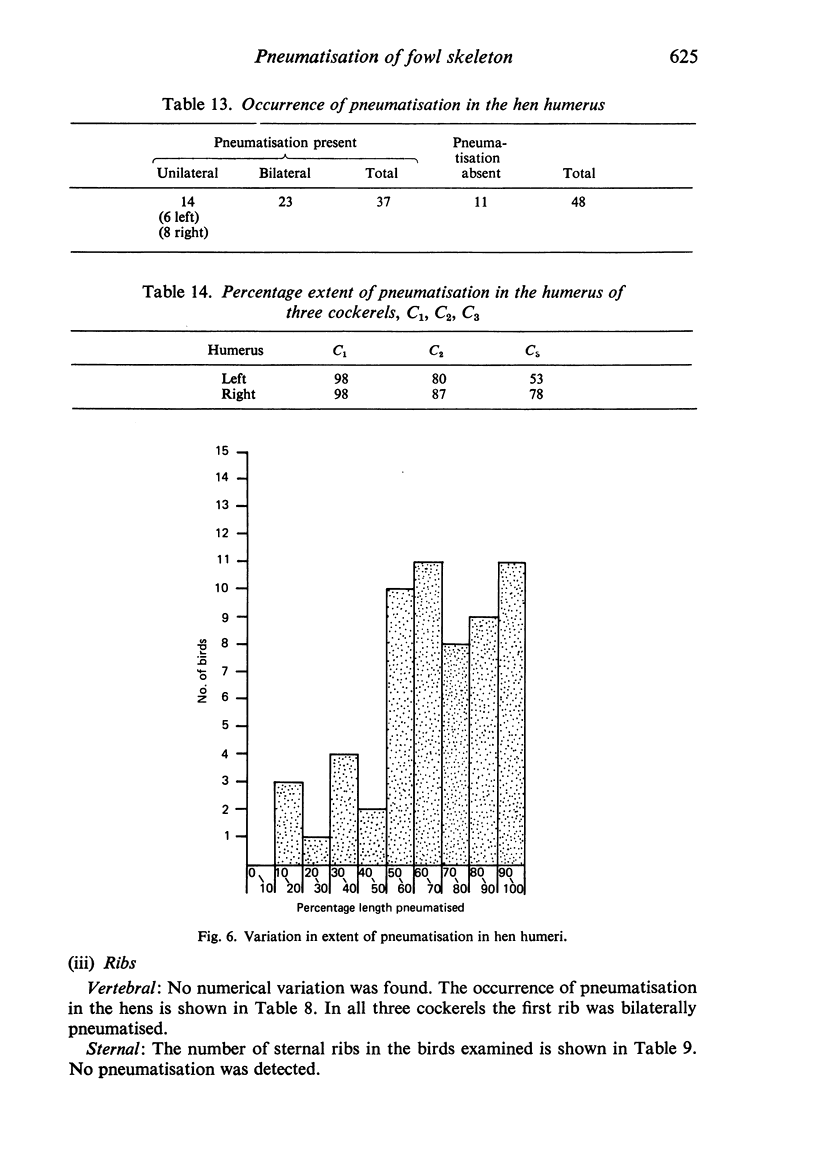
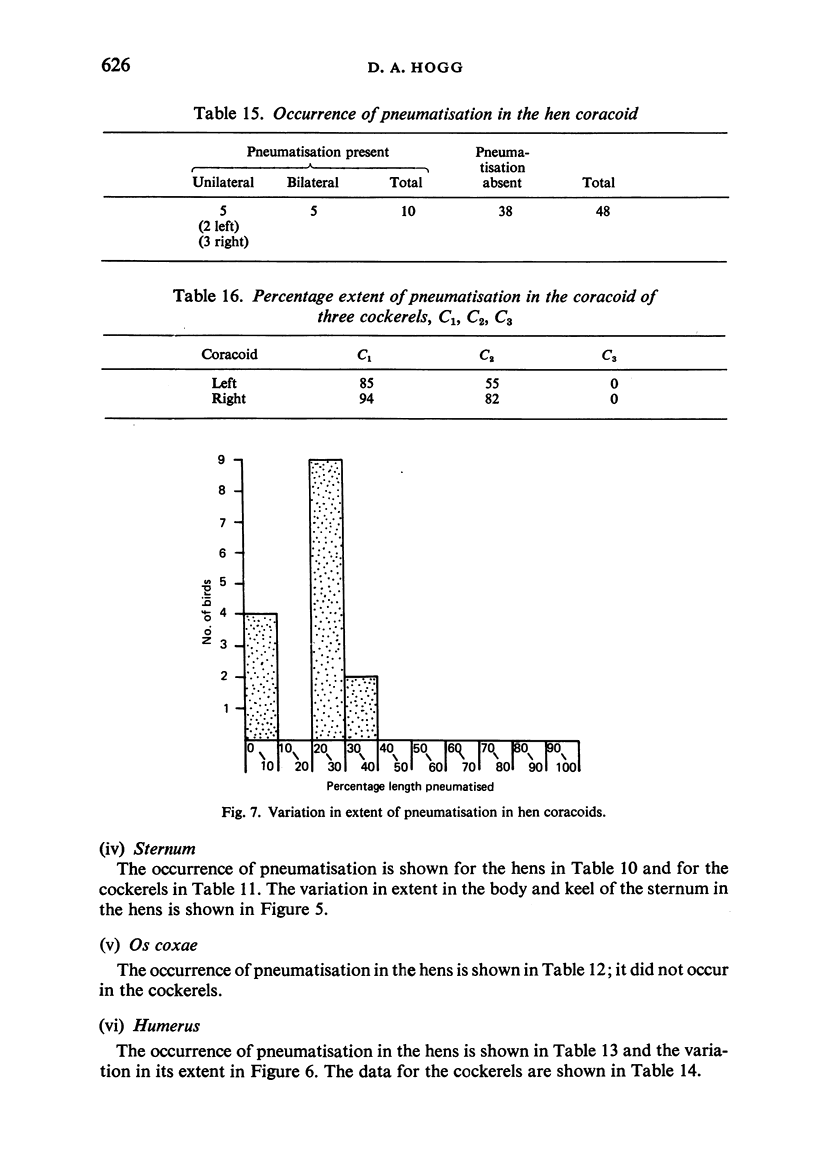
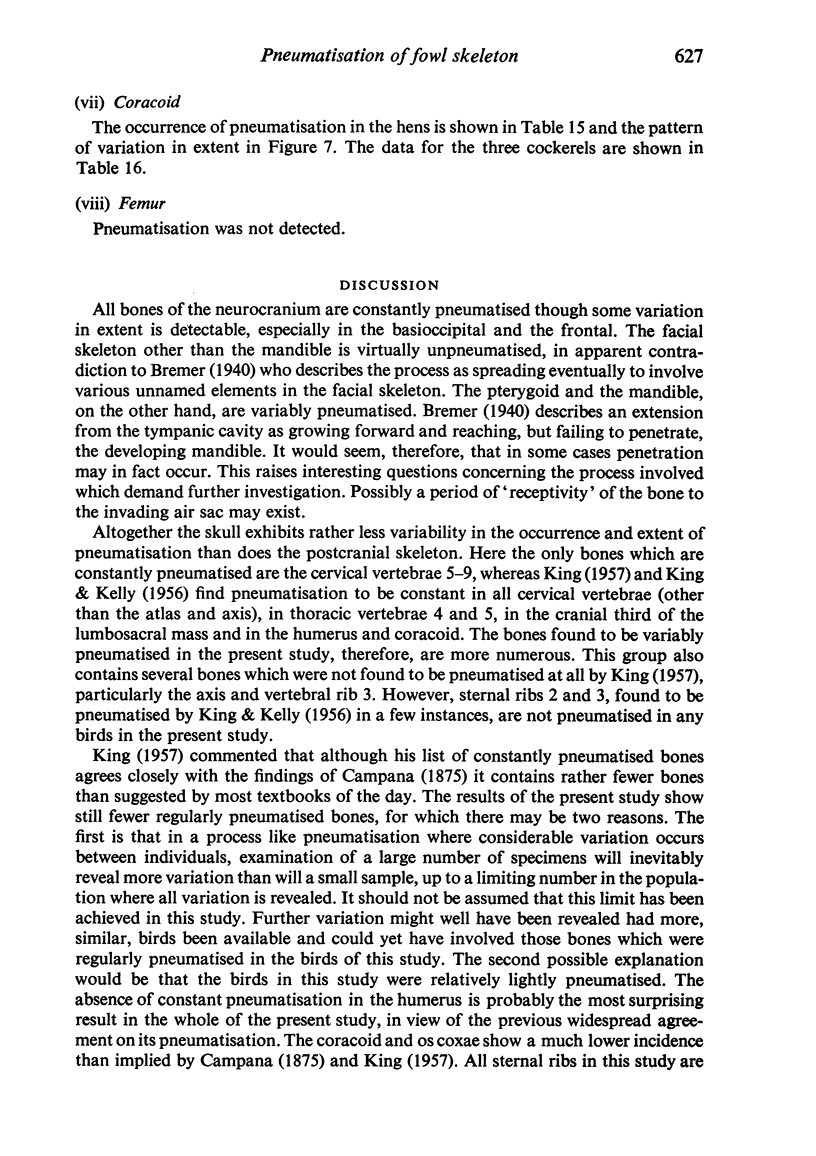
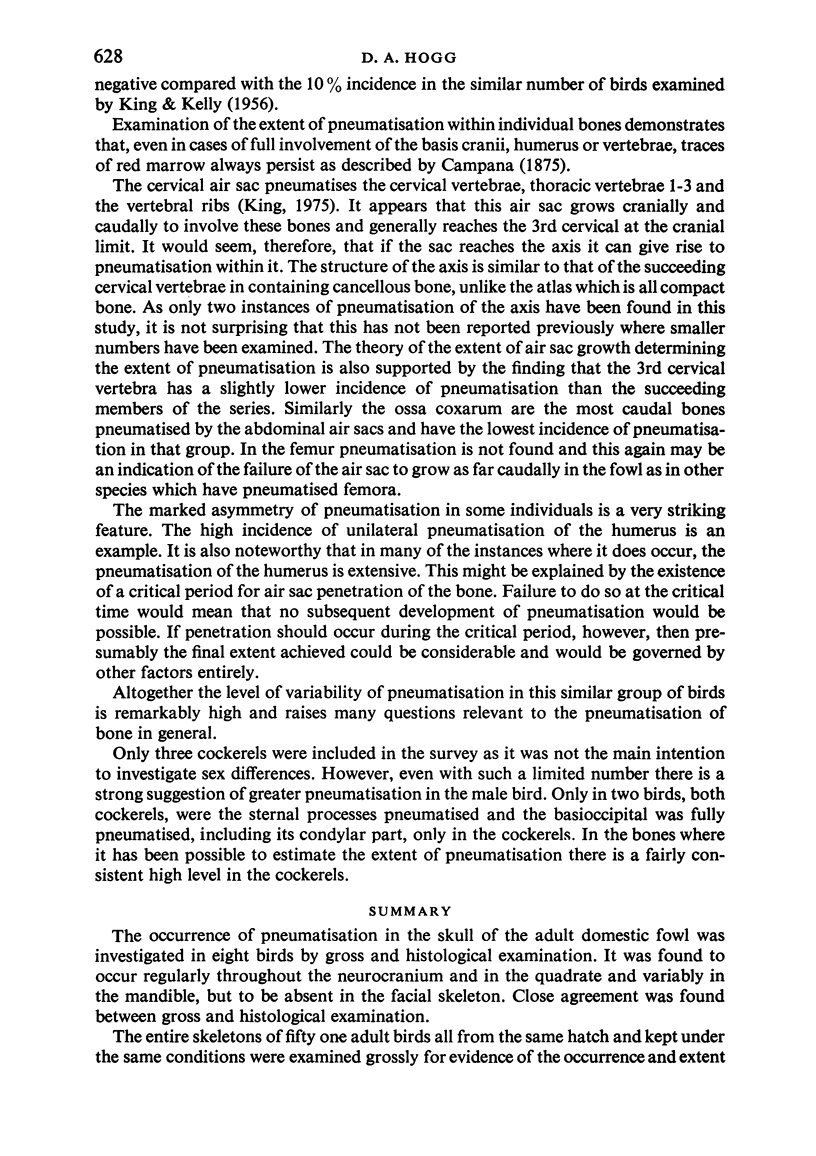
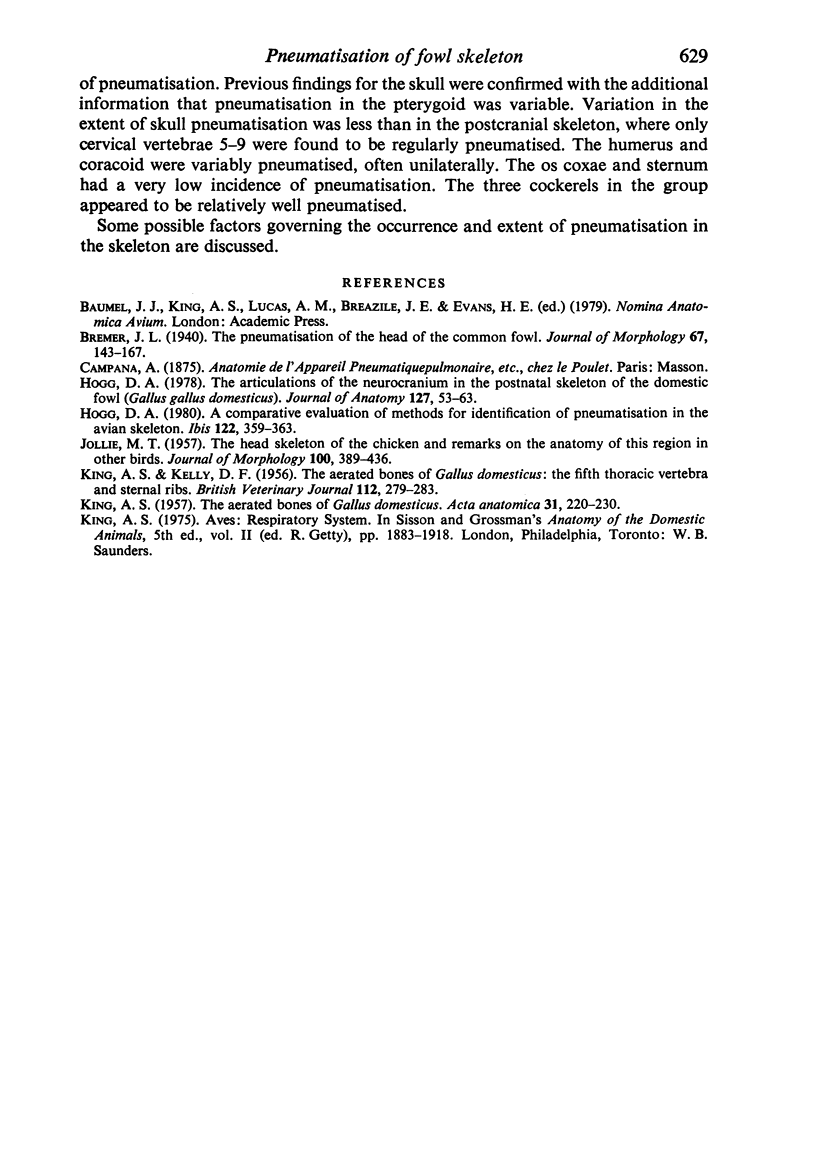
Images in this article
Selected References
These references are in PubMed. This may not be the complete list of references from this article.
- Hogg D. A. The articulations of the neurocranium in the postnatal skeleton of the domestic fowl (Gallus gallus domesticus). J Anat. 1978 Sep;127(Pt 1):53–63. [PMC free article] [PubMed] [Google Scholar]
- KING A. S. The aerated bones of Gallus domesticus. Acta Anat (Basel) 1957;31(2):220–230. doi: 10.1159/000141282. [DOI] [PubMed] [Google Scholar]



